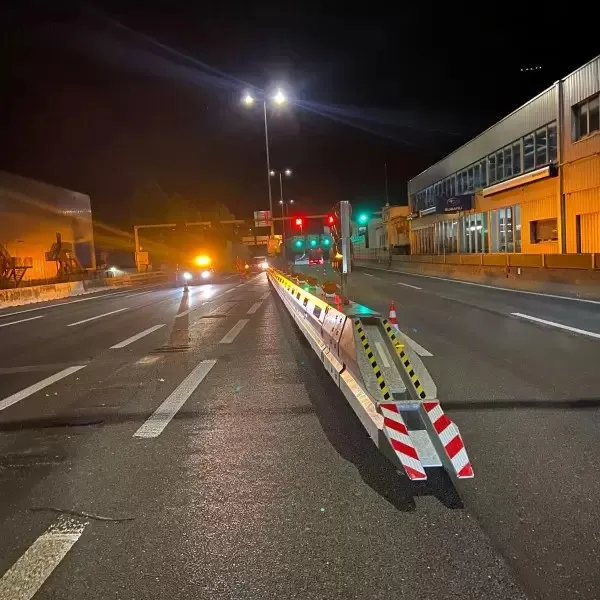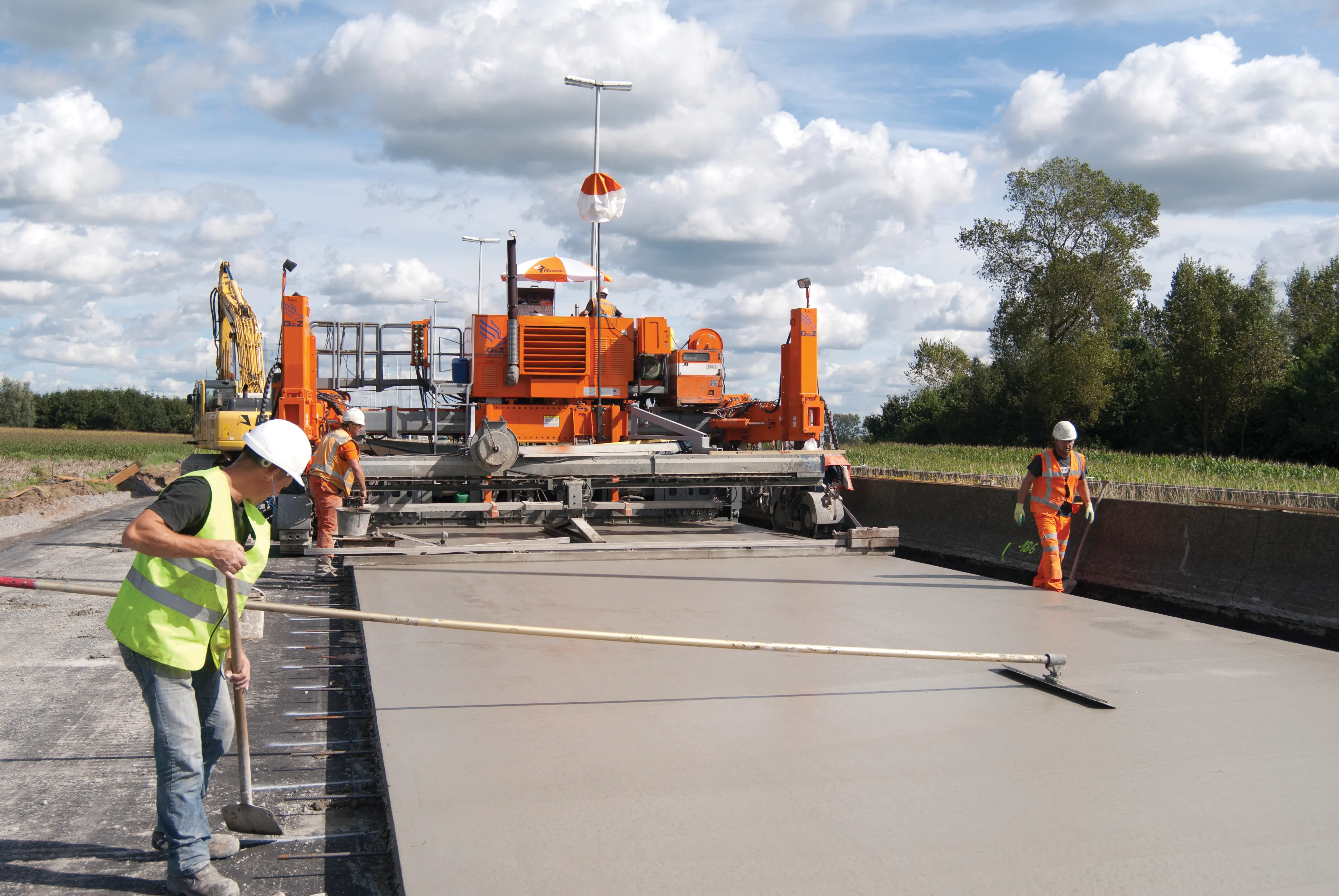
Road maintenance in or around the entrance to tunnels and on bridges has specific risks due to the close proximity of workers to live traffic. Even if vehicle speeds are low around worksites, effective lane management is essential for greatly reducing the risk of injury to maintenance staff.
This is also why the moveable DynaGate system, manufactured to containment level H2, was developed by Swiss road safety manufacturer DynaRoads. It literally swings into action to enable traffic to cross over the centre strip, for example in or near tunnels or bridges.
The system comes with a choice of one or two movable barriers. Its modular construction allows the length to be determined by project specifications and also allows for easy maintenance, expansion and replacement of component parts.
The system can be operated in situ from a roadside control cabinet or by onsite workers from a control panel on the system itself. For added convenience, it can be operated also remotely from a traffic control centre.
It has a manual or automatic operating mode. Should the power supply be interrupted, DynaGate can be operated in emergency mode with a cordless screwdriver or via an external power source. Time for complete lane alteration is around three minutes.
The solution consists of two central reservation crossings with “wing” barrier sections that open to a length of 94m. The width is 60cm and the height is 84cm while the length can be up to 200m, depending on the client requirements. Only a normal uninterruptible power source, 3x240V is needed for swing operation which can be controlled via the internet.
For added safety, there are mounted onto the gates dimmable LED running lights located at 3m intervals and there is a dimmable LED arrow sign on twistable safety-end of the swinging gate section. Reflector strips, red and white, can run the length of the gate.
For a video of the DynaGate system from DynaRoads, click here.









